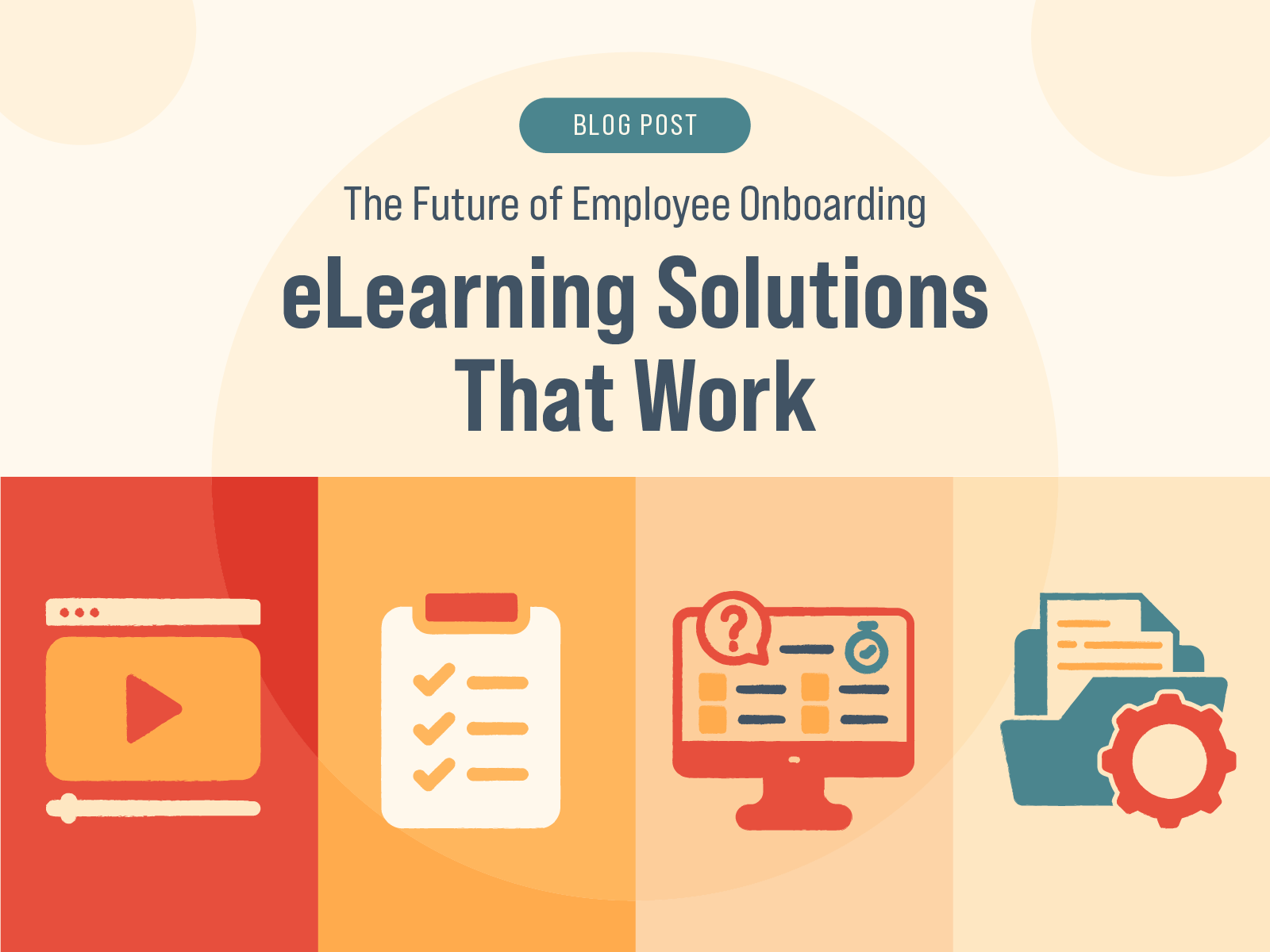The Difference Between An Instructional Designer And An eLearning Developer
In the learning and development field, there are a lot of roles and titles, with one of the most commonly interchanged titles being eLearning developer vs. instructional designer. But did you know these two jobs are actually not the same? Utilizing different skill sets and serving different functions, an eLearning instructional designer and an eLearning developer both serve a unique purpose.
So, what are the different roles and responsibilities of instructional designer positions versus an eLearning course developer? As a leading custom eLearning development company, our team at Allegro Media Design is here to break it down.
What Is an Instructional Designer?
In the most simple terms, the definition of instructional designer is the person who designs an education experience. The roles and responsibilities of instructional designer positions include writing learning objectives, writing content for guides, eLearning courses, and videos, as well as interviewing experts in the field.
When it comes to instructional design in eLearning creation the designer often makes the script for the eLearning, outlining what should be said for the lesson. While they don’t actually create the eLearning themselves, the role of instructional designer professionals is to write the content associated with the eLearning, as well as providing notes on how they expect it to be structured so the eLearning developer knows just what to do.

Instructional Designer Skill Set
Now, let’s talk all about the top skills of an instructional designer. As the instructional designer creates the content and imagines the final product of the eLearning, the skills needed for instructional designer roles are numerous.
Instructional designer core competencies include:
- Creating learning objectives
- Choosing the right methodology
- Writing instructional content
- Interviewing relevant experts on the topics
- Researching other instructional content
- Writing quiz questions
- Creating activities
An instructional designer skillset must include forward-thinking planning of the curriculum as their content paves the way for the course based on eLearning best practices and expert insight.
What Is an eLearning Developer?
Now that we know what an instructional designer developer does, what is an eLearning developer?
Basically, where the Instructional designer designs the course, the eLearning developer actually builds the course. An eLearning course developer uses what the instructional designer wrote to implement their content and assets into the final course. This starts by taking a look at the storyboard provided to make sure the content makes sense and will work with the tools available within an eLearning course. Then, an eLearning developer will begin building the course, working together with the instructional designer to ensure premium functionality and a user-friendly experience with content to match.
Ultimately, when considering eLearning developer roles and responsibilities, they are designers. This team member often has a graphic design background and has a keen understanding of how to create an engaging course using the content that was provided to them.

eLearning Developer Skills
With a strong design background and an eye for the best user experience, eLearning developer skills run the gamut as they work with the instructional designer to create top-notch eLearning. eLearning developer roles and responsibilities can include:
- Utilizing eLearning authoring tools to create interactive eLearning
- Expertise in editing photos and videos to suit a course
- Ability to program a range of interactions and gamified courses
- Relying on keen design principles to create a user-friendly, aesthetic, high-quality training. Understanding HTML, CSS, JavaScript, and other web development tools to create custom designs
Instructional Designer vs. eLearning Developer Roles in eLearning Design and Development
So, how does a course developer vs instructional designer play a role in each step of the eLearning design and development process? With a multi-step process, understanding instructional designer responsibilities versus that of the developer is essential to a smooth-running process.
To help make sense of it, we are breaking down the instructional designer vs eLearning developer responsibilities throughout each phase of the process. Check it out!
Discussing The Scope And Design of The Course
The first step is understanding the scope and design of the course. This is typically the role of instructional designers in eLearning processes as they meet with authorities in the organization to understand expectations and how a course should operate. From there, a design plan will be created to lay out just what features and elements should be included.
Deciding On Course Objectives
Now that a design document has been finalized, the instructional designer will continue to work with authorities and stakeholders to determine the objectives of the course. At this time, the instructional designer should not only determine objectives but gather any necessary information and materials. This includes links to other websites, notes, and more. Then, based on the objectives, the instructional designer will create an outline of the interactions and activities of the course to make sure it’s engaging and hits on all the objectives.
Content Development
It’s finally time to get into the content! This is also when the eLearning developer first steps in, working with the instructional designer as they explain the objectives they were given and the potential outline. At this time, the two will begin dividing the content associated with the objectives into different topics and lessons, creating a storyboard to break it down into a more digestible format.

Review
Now, it’s back to the stakeholders who will review this storyboard and make any necessary changes. This step can be repeated multiple times as the instructional designer and eLearning developer look to create just what the team had in mind.
Production
Once a storyboard is finalized, the development of the course can begin. This is where the eLearning developer really takes the reins as they plug in all that the instructional designer wrote and outlined, creating a course with all the necessary elements - from navigation to activities, video, and other engaging user experiences.
As you can tell, there’s quite a lot of overlap and collaboration between the designer and developer as the two work in tandem to create a well-functioning, digestible eLearning course.
So, Bottom Line: What’s the Difference Between an eLearning Developer and an Instructional Designer?
At the end of the day, the difference between eLearning developer and instructional designer roles comes down to content vs implementation. The instructional designer will ideate and write the necessary content for a course, outlining exactly how it should be implemented. From there, an eLearning developer plugs in all the information to create a well-running, interactive course.
While the roles of an instructional designer vs eLearning developer are clear, the two positions do have a great deal of overlap as they collaborate to create the best possible eLearning. It’s a complex process with a lot of moving parts, but when the two positions work well together, it reflects in an engaging course design.
If you have more questions about creating eLearning courses or want a cutting-edge team to take on the task for you, Allegro Media Design is here to help with expert, elevated learning experiences. Contact us today to learn more about creating the best courses for your business.
More Articles


Gamification in eLearning: Why It Works and How to Implement It

The Future of Employee Onboarding: eLearning Solutions That Work

What is SCORM and What Does it Matter

Accessibility in eLearning: Why It’s Essential and How to Achieve It

Microlearning: Bite-Sized Training for Big Results

Soft Skills Training Through eLearning: Building Better Leaders

How to Write Learning Objectives for eLearning Courses

When to Outsource Your eLearning Development (and How to Choose the Right Partner)

Employee Engagement in 2025: How eLearning Can Help

Training for a Multigenerational Workforce: Meeting Everyone’s Needs

The Future of eLearning: 4 Trends Shaping the Industry

How To Find the Right eLearning Developer

What Makes eLearning Effective?

Transform Your eLearning with the Magic of Animation

How to Use Audio to Enhance eLearning

Boost Learning Efficiency with Microlearning

Give Your Dated eLearning a Fresh Facelift

The Process of eLearning Part 5: The Implementation Phase

The Process of eLearning Part 4: The Development Phase

The Process of eLearning Part 3: The Design Phase

The Process of eLearning Part 2: The Analysis Phase

The Process of eLearning Part 1

Empower Your Workforce with Self-Paced Training

Elevate Your Training with Exceptional Visual Design

Taking the Confusion Out of SCORM

Embrace Efficiency: The Power of Outsourcing Your eLearning Production

Mastering eLearning: Elevating Corporate Training Through Scenario-Based Learning

Converting ILT to vILT: Embrace the Virtual Shift

Spice Up Your Boring Corporate Training With Animated Videos Copy

From Concept to Clicks: The Crucial Role of eLearning Developers

Lost in Translation: Mastering Multilingual eLearning

Training Crossroads: ILT or eLearning – What's Your Strategy?

How to Transform Boring Compliance Training

Last-Minute Crunch? Allegro Media Delivers Rapid eLearning Solutions Just-In-Time!

The Art of Chunking (or How to Eat a Whale)

Zen & The Art of eLearning Maintenance: Finding Harmony with Allegro Media Design

How to leverage ChatGPT for eLearning Applications

What Should I Look for When Hiring an eLearning Vendor?

Unveiling the Future of eLearning: Trends to Watch in 2024

Subject Matter Experts: Be Proud! Allegro loves you just how you are!

What in the World is an LMS?

Enhancing eLearning Engagement: The Power of Scenario-Based Interaction with Stylized 3D Motion Images

Enhancing eLearning with DALL-e: Adding Visual Reinforcement for Engaging Corporate Training

Choosing the Right Authoring Tool for Your eLearning Course

High Quality Audio is ESSENTIAL in Modern eLearning

What in the World is SCORM?

A Complete Guide to Leadership Training and Development

Benefits of Customer Service eLearning Training

14 Tips To Effectively Use Audio for eLearning Courses

10 Instructional Design Tips for Effective eLearning

Why You Should Use eLearning For Product Training

Benefits of Voice Overs for Your Business

How to Create Great eLearning Content: 9 Tips

Video Marketing for Business: 10 Benefits of Promotional Videos

Gamification in the Workplace: Why and How to Use It

5 Best Practices for Training Remote Employees

How to Avoid eLearning Burnout and Fatigue

What Is Customer eLearning Training and Why Do You Need it?

8 eLearning Sales Training Best Practices: Tips & Use Cases

How to Effectively Use Videos in eLearning

Best Practices for Remote Employees Onboarding with eLearning

Why You Should Invest in Corporate eLearning?

How Can eLearning Reduce Employee Burnout?

How to Motivate Employees to Participate in eLearning Training: 9 Tips

eLearning Trends and Predictions: 2022 Forecast

7 Reasons to Outsource Your eLearning Course Development
%20to%20Virtual%20Instructor-Led%20Training%20(VILT).jpg)
How to Convert Instructor-Led Training (ILT) to Virtual Instructor-Led Training (VILT)

12 Best Tips on How to Improve Employee Training with Gamification in 2021-2022

What Is Compliance Training and Why Is It Important for Your Business?
%20vs.%20eLearning.jpg)
Instructor-Led Training (ILT) vs. eLearning: Which Should I Choose?
















